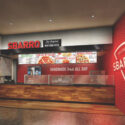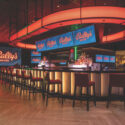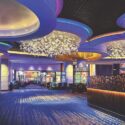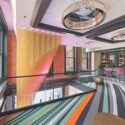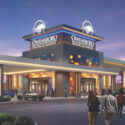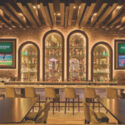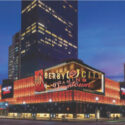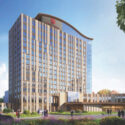
In the world of hospitality design, tastes evolve, trends change and new competition emerges quickly. Staying relevant is a perpetual challenge.
Nowhere is this truer than in the realm of casino resorts, where the competition for guests’ attention and dollars is fierce. One powerful strategy to stand out from the competition is the renovation and rebranding of restaurants. The food-and-beverage offerings at a casino resort are often the most flexible spaces, and allow owners to make their assets agile and respond to ever-changing guest preferences.
Casinos sit at the forefront of luxury and entertainment. Guests are looking for unforgettable experiences. Unique food-and-beverage options, integrated into those experiences, play an integral role in a resort’s success in keeping guests engaged and on property.
In an industry where the only constant is change, casinos that don’t engage in a regular process of rebranding and refreshing quickly look worn out and dated. And soon enough, guests are drawn to the next new shiny property. Recognizing this, casino resorts frequently undergo facelifts to keep pace with evolving consumer preferences and maintain their competitive edge.
More than Cosmetic Changes
Rebranding is not just about changing a name or updating the décor; it’s about reinventing the essence of a dining establishment. Transforming a tired, outdated restaurant into a vibrant culinary hot spot, replete with a fresh concept, tantalizing menu and immersive ambiance, starts with an operational goal, relies on excellent interior design, and hinges on sourcing excellence and project execution.
Renovating a restaurant within a casino resort is a multifaceted endeavor, blending creativity with pragmatism, and innovation with operational efficiency. Disrupting operations at a casino is a serious undertaking that can cost owners millions in present revenue and potential future visits from guests. A rebranding effort begins with meticulous planning, in which every aspect, from layout and design to menu integration, is scrutinized.
The core of the rebranding effort must express the owner’s goals in a format that can be executed in the real world. Whether it’s the sleek sophistication of a fine dining establishment, the cozy charm of a rustic bistro, or the vibrant energy of a new nightclub or bar, design sets the stage for what the new venue will offer guests.
Collaborating with seasoned interior designers and architects who have experience in the gaming environment will breathe life into this vision, translating abstract concepts into a set of buildable, buyable documents that capture that vision.
Experienced interior designers understand that the documents they produce should consider both form and function as inseparable companions. A restaurant interior design may capture the owner’s vision, but if it fails to provide comfort and functionality, the rebranding is not successful. Thus, the renovation process is a delicate balancing act, where aesthetics harmonize with practicality to create a seamless operational experience.
From optimizing space utilization in conjunction with the operations team to ensuring comfortable, functional seating through prototyping, every design decision is a meticulous calculation aimed at striking the perfect balance between form and function.
Once the design is complete and approved, the project execution for the furniture falls to the purchasing agent. The best purchasing agents understand that sourcing excellence blends a global perspective with a local touch.
Global Scope, Local Perspective
In today’s interconnected world, designers and purchasing work with manufacturers around the world, relying on those resources to deliver the specified products on time and under budget.
Restaurant rebranding projects are smaller than full property renovations, and as such, the vendor pool within the contract manufacturing segment of the furniture industry is smaller. The project purchasing agent needs to be able to curate the vendor selection to those vendors who specialize in restaurants and smaller-scale production for custom products.
In a casino environment, every piece of furniture must meet the specifications and standards of the designer and operator. This protects both the guest and the operators. Coordinating the required approvals before custom product can be made takes time and precise attention to detail. With proper planning, the production can be ready on time to ship to the project.
As part of sourcing the right product to execute the design, the purchasing company must also navigate the complex web of logistics and construction timelines. From coordinating international shipments to navigating customs regulations and import/export procedures, the logistics of sourcing furnishings for a restaurant at a casino resort require meticulous planning.
At our company, Purchasing Management International, a dedicated team of expediting experts works tirelessly to ensure that each piece of furniture arrives on schedule and ready for installation. This is in addition to coordinating the delivery of other products that are part of the contractor’s critical path, to keep the construction efforts moving ahead according to the schedule.
In the competitive world of casino resorts, the revitalization and rebranding of a property’s food-and-beverage offerings is essential to staying relevant. Through meticulous planning and collaboration, owners reimagine dining experiences, balancing creativity with practicality. This transformation involves a careful blend of design innovation, sourcing excellence and logistical coordination.
Ultimately, it’s about creating unforgettable experiences that keep guests engaged, and keep an owner’s casino at the forefront of luxury and entertainment.




